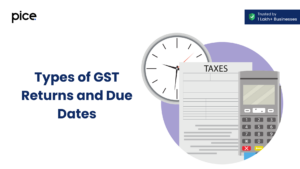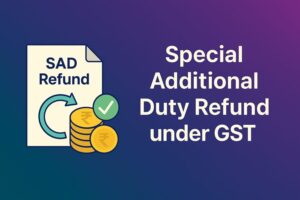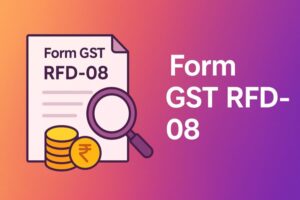ITC Claims on Credit Fraud
- 27 Aug 24
- 14 mins
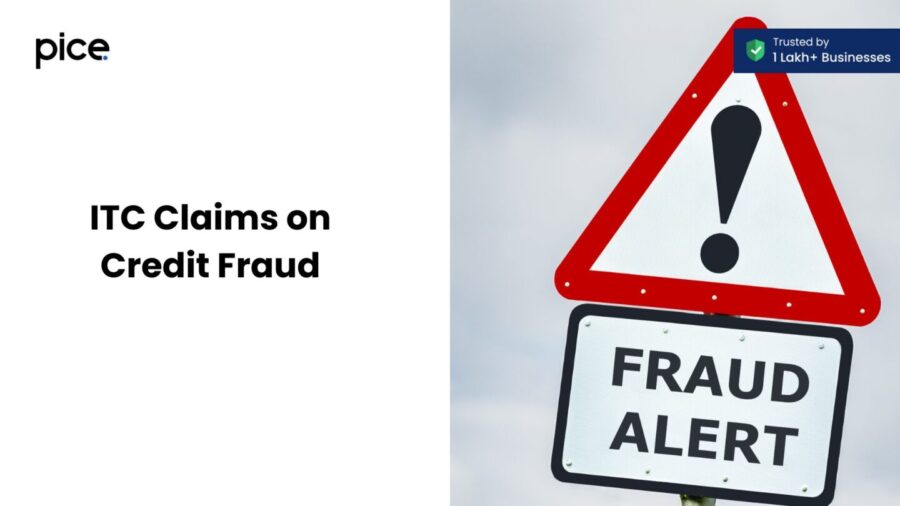
ITC Claims on Credit Fraud
Key Takeaways
- Credit fraud in GST involves the misuse of Input Tax Credit through fake invoices and fraudulent activities.
- Fake GST invoices are used by fraudsters to claim ITC without actual transactions, leading to significant revenue losses.
- Issuing fake invoices can result in hefty fines, penalties, and legal action against the businesses involved.
- The government employs advanced technology, regular audits, and strict penalties to prevent and detect GST ITC fraud.
- Additional measures like ERP systems, secure document verification, and increased awareness can further prevent bogus GST ITC claims.
What does a Credit Fraud mean?
Credit fraud is lying to get money or things on credit without permission or to avoid paying back credit that has already been given. Input Tax Credit (ITC) abuse is a common type of credit theft in the GST (Goods and Services Tax) world. False actions like sending fake bills, claiming ITC without actually providing goods or services, and changing tax returns are examples of this. Fraudsters take advantage of gaps in the GST system to get unfair advantages, which costs the government a lot of money.
The Input Tax Credit is an important part of the GST system because it lets businesses get credit for the tax they paid on the things they used to make items or provide services. But fake receipts can be used to trick this system so that ITC is claimed even though there was no real transaction. This kind of fraud not only hurts the trustworthiness of the tax system, but it also makes things harder for honest taxpayers.
Criminal activity after GST registration is frequent. Once a business has registered for GST, they often do illegal things to get extra credit. This can include making fake businesses, transactions, and papers, and sending them in. In these situations, the flow of credit is fake; there is no real movement of things or services. Instead, big money is made through illegal ITC claims.
There are many effects of credit fraud that go beyond the tax authorities and affect the business as a whole. Government money that could have been used for public welfare and growth is lost because of it. It also makes people less trusting of the tax system, which leads to tighter rules and requirements that affect all taxpayers. Knowing what credit scam is the first thing that can be done to stop it and make sure that taxes are fair and clear.
How do frauds make use of fake GST invoices?
Criminals use fake GST bills to claim Input Tax Credit without permission, taking advantage of the fact that the GST system relies on self-declaration and digital proof. People make fake bills for goods and services that haven't been delivered in order to make ITC claims. It's possible for these bills to have fake signatures, business information, and transaction values that make it look like real transactions took place.
There are different ways that fake GST bills can be used for illegal activities. One popular way is to set up "shell" companies that don't exist in real life. These companies make invoices for deals that didn't happen, which lets the fraudster claim ITC even though there was no real business activity. There are times when real businesses don't know that fraudsters are using their GST identification numbers (GSTINs) to make fake bills.
Another important part is fraud after registration, which is when newly registered businesses send fake bills. These businesses take advantage of the first few weeks when there isn't as much scrutiny to make a lot of fake invoices that claim ITC and then disappear before the tax officials can catch up. This not only causes direct tax loses, but it also makes it harder to keep the GST system honest and follow the rules.
Thieves are now using more complex methods, like artificial intelligence and machine learning, to make fake bills look more real. With these technologies, fake bills can be made that look so real that they are hard to tell apart from real ones. Once these fake invoices are mixed in with real business records, it gets harder to spot fraud. This makes it hard for tax officials to find and investigate fraudulent activities.
Fake GST invoices cause more problems than just cash losses. They mess up the supply chain, make business records less accurate, and make all companies more closely watched and cost more to comply with. To protect the integrity of the GST system, strong verification processes, regular checks, and harsh punishments for offenders are needed to stop the misuse of fake invoices.
Consequences and Impact of Issuing Fake Invoices
For businesses and the economy as a whole, sending out fake invoices has serious effects. People use fake bills to falsely claim Input Tax Credit, which costs the government money and threatens the stability of the GST system. Attorneys will usually take legal action against people who send fake bills. This can include heavy fines, jail time, or other punishments.
If a company is caught sending fake bills, it will be punished right away, and all of its fraudulent ITC claims will be thrown out. This can cause the business to lose a lot of money, especially if it has already used the reported ITC to lower its tax bill. Businesses may also have to deal with audits and reviews, which can cause more problems and costs.
💡If you want to pay your GST with Credit Card, then download Pice Business Payment App. Pice is the one stop app for all paying all your business expenses.
Fake bills also hurt the economy in bigger ways. They change the way businesses compete in the market, giving dishonest ones an unfair edge over honest ones. This could make people lose faith in the GST system, which would force the government to make compliance rules that are stricter for all companies. Compliance costs and administrative tasks that go up can make it harder for businesses to run and grow.
A network of businesses and middlemen are often involved in the fraud that leads to fake bills, making it hard to get through the web of lies. This makes it hard for tax officials to find fraud and takes a lot of time and money. In addition, fraud can hurt a company's image, which can cause customers to lose trust and even cause the company to shut down.
Departments and officials in the government are always working to find and collect more fraud. To help with healing, we need advanced ways to find fraud, strict checks, and harsh punishments for those who break the rules. Artificial intelligence and specialized third-party proof are two examples of technology that can help find and stop fraud more effectively.
To stop fake actions, the process of checking documents and registration applications must be made more reliable. It is very important for people and companies to know what happens when they send fake invoices and how important it is to follow the rules. Businesses can stay aware and avoid getting involved in fraud by getting regular training and updates on GST compliance.
Measures the Government Should Take to Curb GST ITC Fraud
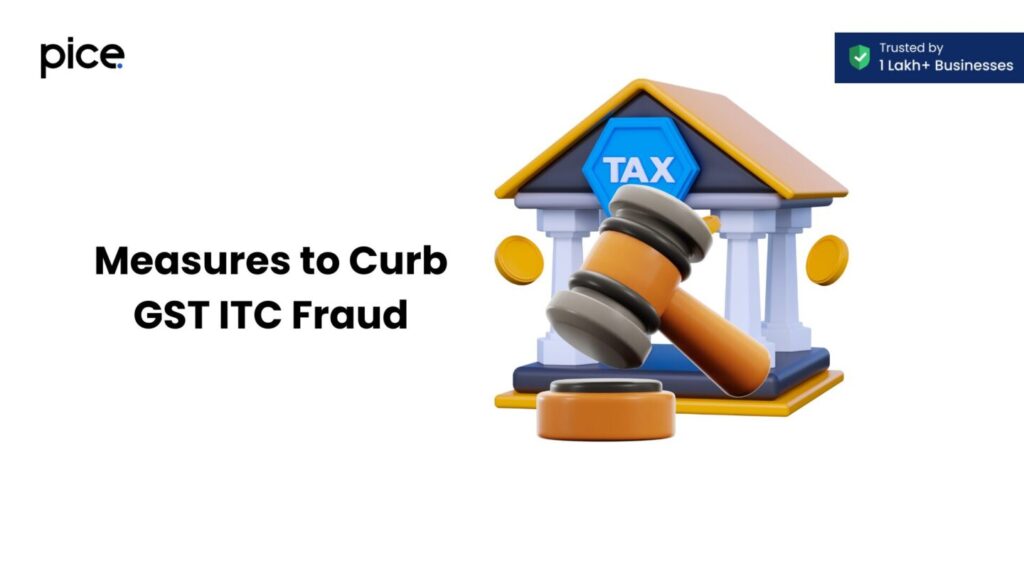
In order to stop GST ITC fraud for good, the government needs to use a combination of strict rules, cutting-edge technology, and aggressive enforcement. Improving the process of checking people out when they apply for GST registration is one of the main steps. To make sure that only real businesses get GST registration, this includes detailed background checks and verification of business credentials.
Real-time monitoring and data analytics should also be used by the government to keep an eye on fishy actions and catch fraud early. Using machine learning and artificial intelligence can help find trends and outliers that point to dishonest behavior. These technologies can look at a lot of data, like past transactions and invoice information, to find signs of possible fraud that need to be looked into further.
Regular audits and reviews are necessary to make sure that rules are followed and to stop fraud. Random and targeted audits of businesses should be done by the government to make sure that trades and ITC claims are real. It is important that these checks are backed up by strong laws that punish people severely if they are caught making fake invoices or committing other types of fraud.
Campaigns to make people aware of the risks and effects of GST ITC fraud are very important for teaching businesses about them. These efforts should stress how important it is to follow the rules and how serious the legal and financial consequences are of cheating. There should be an incentive for businesses to report any fishy or fraudulent actions they see.
The government should also think about setting up a reward system for people who report GST theft. This might encourage people to come forward with information that can help catch and punish fraudsters. Giving businesses training and tools can also help them understand how complicated GST compliance is and keep them from breaking the law by accident.
Working together with other government offices and agencies can make efforts to find and stop fraud more effective. Sharing tools and information can help come up with a complete plan to fight GST fraud. Fraudsters often work across lines to avoid being caught, so working together with other countries can also be helpful.
Government Strategies for Preventing GST ITC Fraud
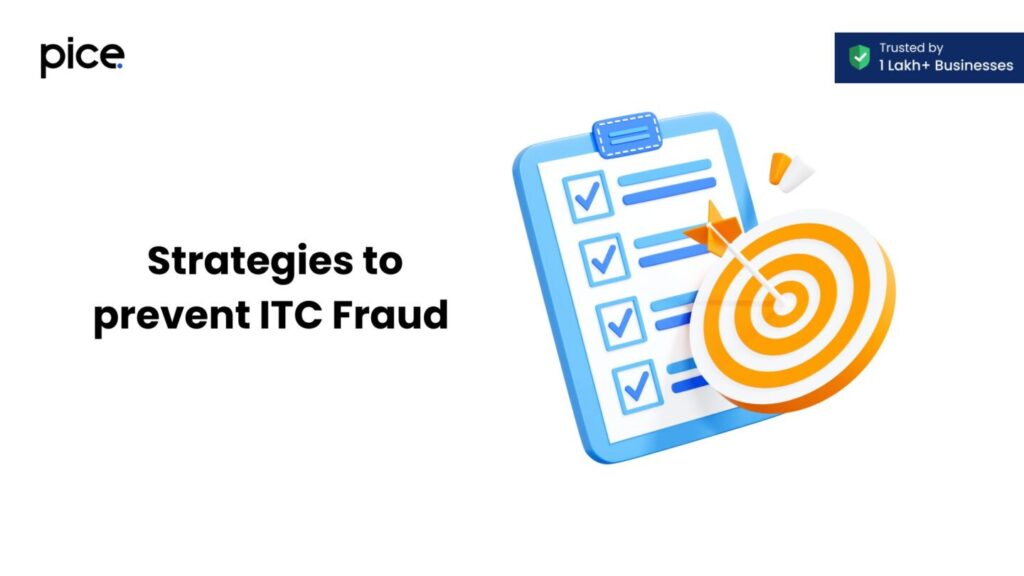
To stop GST ITC fraud, the government uses a number of methods, mainly strong proof systems, new technologies, and strict enforcement measures. One important approach is to make sure that registration applications are real. The government can make sure that only real businesses are registered under GST by doing a lot of checks and balances during the registration process.
Intelligent computers and machines that learn on their own are very helpful in finding scams. These technologies can look through huge amounts of data to find deals and ITC claims that don't make sense. Artificial intelligence (AI) helps the government find scams early and take steps to reduce risks.
Regular checks and audits are essential for keeping up with rules and stopping fraud. Random and targeted checks are both done by the government to make sure that transactions and ITC claims are real. Audits like these help find mistakes and make sure that companies follow GST rules.
Another important approach is to work together with other government departments and agencies. The government can come up with a complete plan to fight GST fraud by sharing information and resources. Working together makes it easier to find scammers who work in many different areas and industries.
Businesses need to be taught about the risks and effects of GST ITC fraud through public awareness programs. These ads stress how important it is to follow the rules and how serious the legal and financial consequences are for breaking the law. It is urged for businesses to report any strange activities they see.
The government also has a program that rewards people who report GST theft. This gives people a reason to come forward with knowledge that can help catch and prosecute fraudsters. Giving businesses training and tools also helps them understand how complicated GST compliance is and avoid breaking the law by accident.
Another way the government fights GST ITC theft is by working with other countries. Fraudsters often work across borders to avoid being caught, so working together across borders is important for stopping fraud. The government can better find and stop fraud by sharing knowledge and the best ways to do things with other countries.
Extra Measures to Prevent Bogus GST ITC
In addition to the primary strategies, there are several extra measures that can be implemented to prevent bogus GST ITC. One effective measure is the integration of ERP (Enterprise Resource Planning) and e-TDS (Electronic Tax Deducted at Source) return filing solutions. These systems automate the process of GST compliance, reducing the risk of human error and fraud. By using ERP systems, businesses can ensure accurate and timely filing of GST returns and maintain proper records of transactions.
The government can also enhance the document verification process by implementing secure document upload features on the GST portal. This ensures that all submitted documents are authentic and have not been tampered with. Specialized third-party verification services can also be employed to verify the legitimacy of invoices and other documents submitted by businesses.
Implementing an e-way bill system can help track the movement of goods and prevent bogus ITC claims. The e-way bill system requires businesses to generate a bill for the transportation of goods, providing details such as the supplier, recipient, and goods being transported. This helps ensure that goods are actually being moved and not just paper transactions.
The government should also focus on improving recovery rates for fraudulent ITC claims. This involves setting up dedicated teams to track and recover the amount claimed through bogus ITC. Steps for recovery need to include freezing the assets of fraudulent businesses and initiating legal proceedings to recover the funds.
Increasing awareness among individuals and businesses about the importance of compliance and the risks of fraudulent activities is crucial. Regular training sessions, workshops, and informational campaigns can help businesses understand their responsibilities and the severe consequences of engaging in fraud.
Finally, the government should implement stricter penalties for those found guilty of issuing fake invoices or engaging in other forms of GST fraud. This includes imposing hefty fines, imprisonment, and blacklisting businesses from future GST registration. By taking these extra measures, the government can further strengthen its efforts to prevent bogus GST ITC and ensure a fair and transparent tax system.
 By
By 









